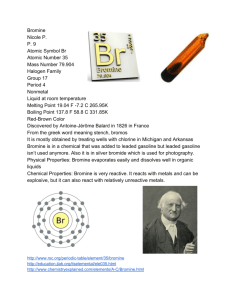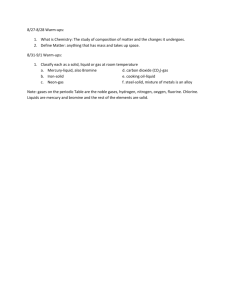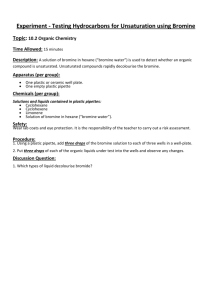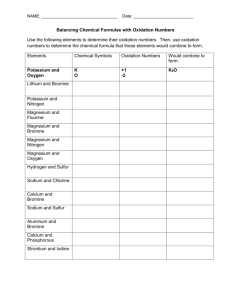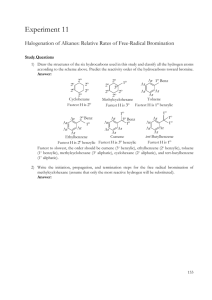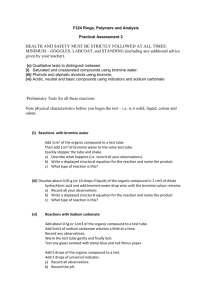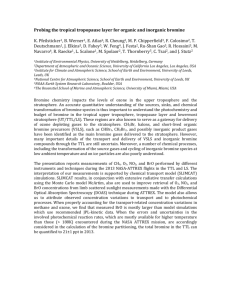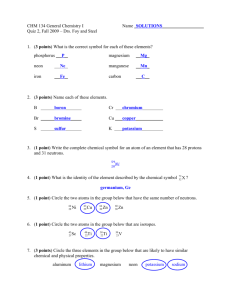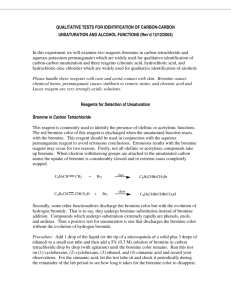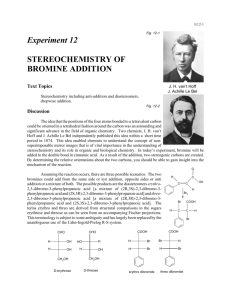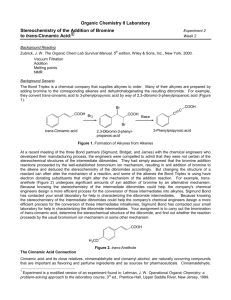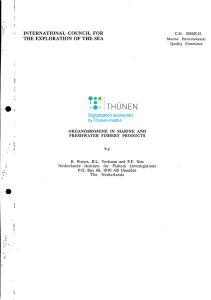Bromine Water Test
advertisement
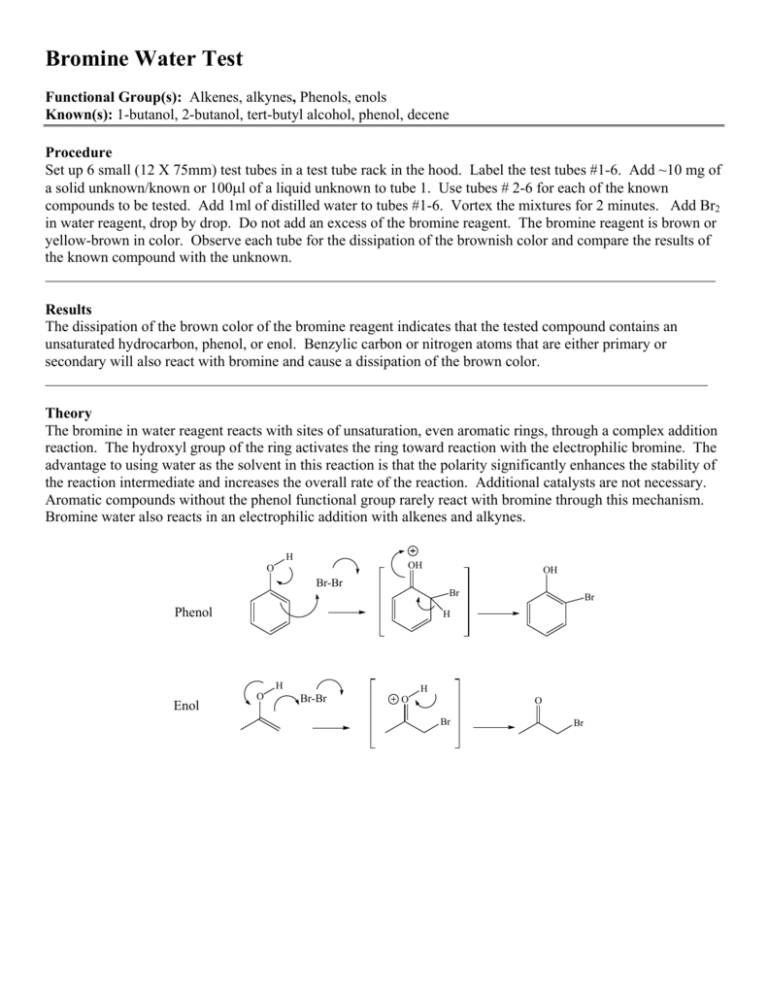
Bromine Water Test Functional Group(s): Alkenes, alkynes, Phenols, enols Known(s): 1-butanol, 2-butanol, tert-butyl alcohol, phenol, decene Procedure Set up 6 small (12 X 75mm) test tubes in a test tube rack in the hood. Label the test tubes #1-6. Add ~10 mg of a solid unknown/known or 100l of a liquid unknown to tube 1. Use tubes # 2-6 for each of the known compounds to be tested. Add 1ml of distilled water to tubes #1-6. Vortex the mixtures for 2 minutes. Add Br2 in water reagent, drop by drop. Do not add an excess of the bromine reagent. The bromine reagent is brown or yellow-brown in color. Observe each tube for the dissipation of the brownish color and compare the results of the known compound with the unknown. Results The dissipation of the brown color of the bromine reagent indicates that the tested compound contains an unsaturated hydrocarbon, phenol, or enol. Benzylic carbon or nitrogen atoms that are either primary or secondary will also react with bromine and cause a dissipation of the brown color. Theory The bromine in water reagent reacts with sites of unsaturation, even aromatic rings, through a complex addition reaction. The hydroxyl group of the ring activates the ring toward reaction with the electrophilic bromine. The advantage to using water as the solvent in this reaction is that the polarity significantly enhances the stability of the reaction intermediate and increases the overall rate of the reaction. Additional catalysts are not necessary. Aromatic compounds without the phenol functional group rarely react with bromine through this mechanism. Bromine water also reacts in an electrophilic addition with alkenes and alkynes. H OH O OH Br-Br Br Phenol H H Enol Br O H Br-Br O O Br Br

